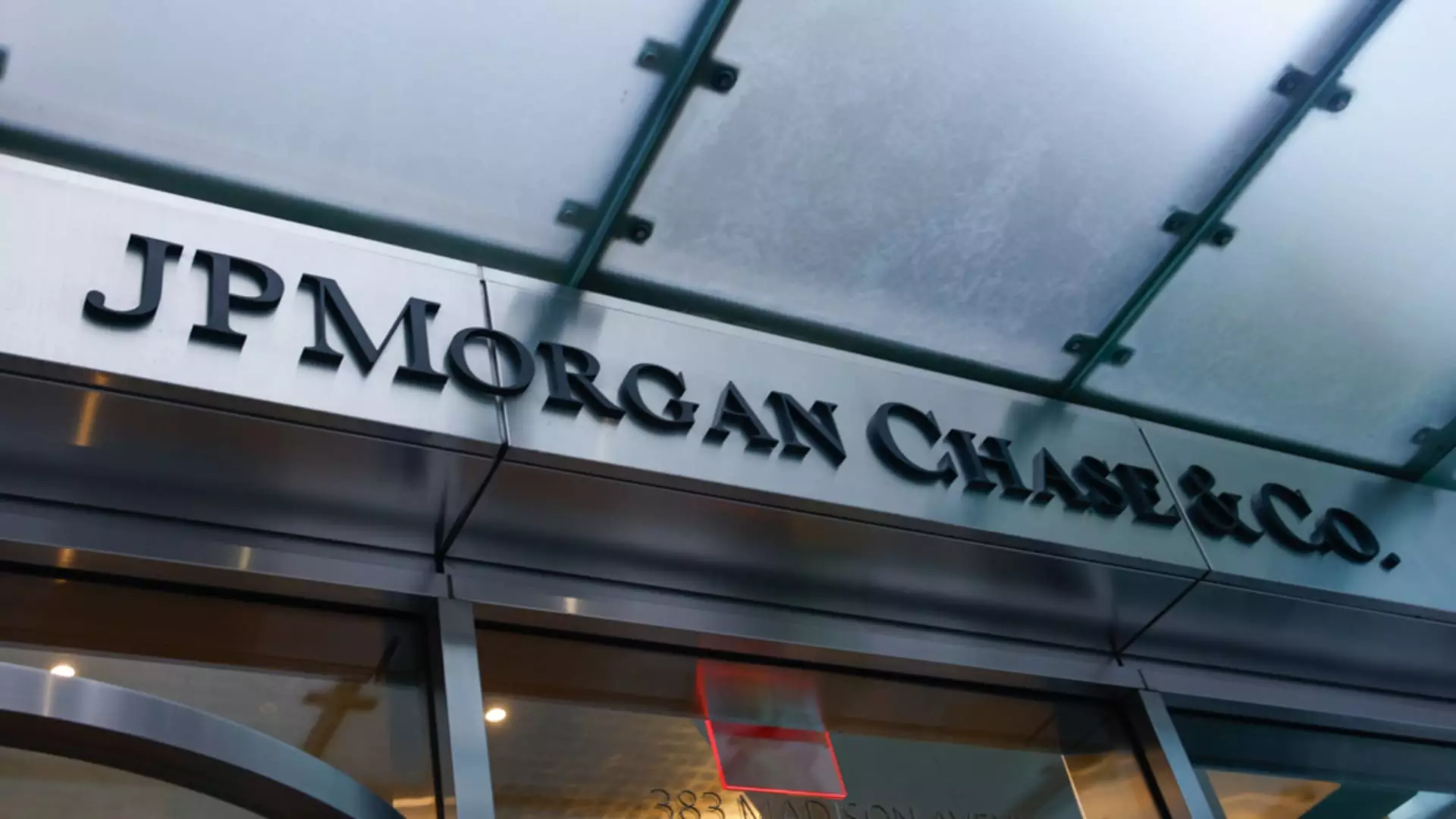The recent surge in JPMorgan Chase and Bank of America shares has captured Wall Street’s optimism, but a deeper dive reveals a precarious foundation. Analysts, including Baird’s David George, are sounding the alarm that the rally may soon unravel. JPMorgan’s extraordinary rise—up over 20% this year—is impressive but priced at a dangerously elevated multiple. Trading at nearly three times tangible book value and a forward price-to-earnings ratio of 15.5, JPMorgan now sits at valuations rarely justified outside of tech or other high-growth sectors, not traditional banking. This implies that the market is betting heavily on perfection and overlooks the inherent cyclical risks and regulatory uncertainties that banks still face, even in a seemingly benign environment.
George’s downgrade of JPMorgan to “underperform” is a signal that the risk-reward equation has tipped unfavorably. The stock’s historic premium status speaks less to its intrinsic value and more to investor complacency born from deregulation tailwinds and capital markets reopening. While JPMorgan’s dominant business franchises and fortress-like balance sheet earn deserved respect, the reality is that markets are forward-looking, and record valuations typically precede tempered returns or outright corrections. To put it bluntly, the market is chasing the narrative of a ‘best-in-class’ bank without demanding the price discipline that should accompany such exuberance.
Bank of America: Fair Value or Overhyped Stability?
Bank of America’s position is more nuanced. Though it trails JPMorgan in share performance, with an 8% gain year-to-date, its valuation metrics suggest a more balanced outlook. Trading at a forward P/E of just over 13 and exhibiting improving net interest margins, it doesn’t scream “bubble,” but it also doesn’t offer compelling upside from current levels. George’s neutral stance on BAC reflects the view that much of the stock’s gains have been priced in—especially considering past fears tied to tariff panic sell-offs and recent upticks in capital markets activity.
For investors attracted by sustainability rather than explosive growth, Bank of America may be a reasonable holding. Still, the stock’s vulnerability lies in the fact that it is no longer undervalued. Without new catalysts, such as meaningful deregulation extensions or capital market booms, BAC risks drifting sideways or worse if macroeconomic shocks occur. Longtime fans of the franchise must acknowledge that, despite the improving fundamentals, the current enthusiasm may have extinguished much of the potential “margin of safety.”
Wall Street’s Overconfidence Risks Pruning Returns
It is telling that most analysts maintain bullish ratings on both mega-cap banks, with more than half issuing strong buy or buy recommendations. This widespread conviction reveals a herd mentality that sidelines valuation discipline—a cardinal sin in investing. The temptation to ride the tide of deregulation and capital market reopening amplifies the risk of a correction when growth slows or unexpected headwinds emerge.
From a center-right liberal perspective, this scenario underscores a perennial tension in capitalist markets: the allure of deregulation and growth optimism versus the need for prudent valuation and market skepticism. Banks undoubtedly benefit from sensible deregulation that promotes competition and efficiency, but reckless exuberance detaches prices from fundamentals. The over-enthusiasm displayed in these mega-banks’ soaring prices flags a cautionary tale for investors who must remain grounded in valuation realities rather than getting swept away by narratives of invincibility.
Valuation Discipline: The Forgotten Antidote
The current pricing of JPMorgan and Bank of America highlights a broader issue in the financial markets—a deficiency in valuation discipline fueled by optimism and liquidity. Investors’ dismissiveness of record valuations in JPMorgan’s case is a dangerous gamble. Historically, when high-growth sectors command premiums stretching beyond their earnings or book value, reversion to the mean is nearly inevitable.
Banks wield systemic importance and generally exhibit stability, but this is no excuse for complacency. As George pointed out, the market’s exceedingly high expectations for JPMorgan risk setting the stage for price disappointments, while Bank of America’s shares reflect a cautious equilibrium that may inhibit meaningful gains.
In essence, the megabanks’ rally may be more a reflection of transient market exuberance than bona fide fundamental strength. Investors should heed the sobering valuations and temper their enthusiasm rather than succumb to the momentum-driven euphoria dominating headlines and trading floors alike.

